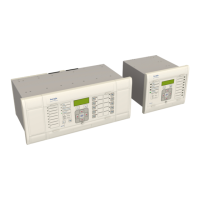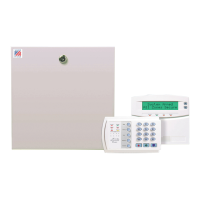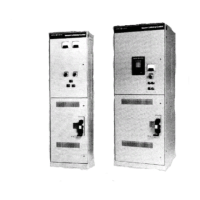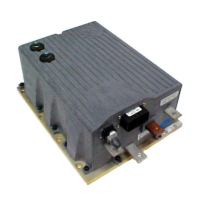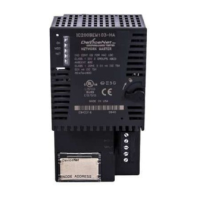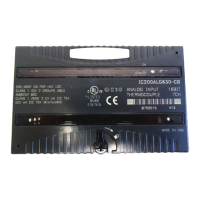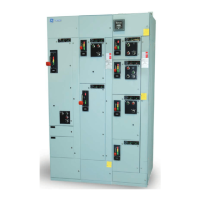4 PHASE AND EARTH FAULT DISTANCE PROTECTION IMPLEMENTATION
The Distance protection requires line data to be input to operate correctly. You must first input the data using the
settings in the LINE PARAMETERS column.
The Distance protection has a Setting Mode which is set to Simple by default. We recommend the default for
most applications. Instead of entering distance zone impedance reaches in ohms, zone settings are simply entered
in terms of percentage of the protected line data specified in the Line Impedance setting in the LINE PARAMETERS.
The setting assumes that the residual compensation factor is equal for all zones. The protection calculates the
required reach settings from the percentage settings. The calculated zone reaches are available for viewing but
you cannot change the values.
An Advanced Setting Mode allows individual distance ohmic reaches and residual compensation factors to be
entered for each zone. When advanced mode is selected, all 'percentage' settings associated with the Simple
setting mode are hidden and the Distance zone settings need to be entered for each zone in the DIST. ELEMENTS
column.
4.1
PHASE FAULT CHARACTERISTICS
Each phase zone can be Enabled or Disabled using the Zone Ph Status settings in the DISTANCE SETUP
column.
Characteristics can be either 'Quadrilateral' (polygon), or Mho (circular). The chosen characteristic applies to all
zones. All distance elements are directionalized and use residual compensation of the corresponding phase fault
reach.
4.2
EARTH FAULT CHARACTERISTICS
Each ground zone can be Enabled or Disabled using the Zone Gnd Status settings in the DISTANCE SETUP
column.
Characteristics can be either 'Quadrilateral' (polygon), or Mho (circular). The chosen characteristic applies to all
zones. All distance elements are directionalized and use residual compensation of the corresponding phase fault
reach.
4.3
DISTANCE PROTECTION TRIPPING DECISION
A fault is detected if the phase voltage drops below 70%, or if the phase selector picks up. When a fault is detected,
the protection stores values recorded over the two previous cycles. These are used to provide a reference for
memory polarization, etc, as the fault is processed.
For security, a number of criteria must be satisfied before the distance protection issues a trip command. These
are as follows:
● The phase selector needs to identify the faulted phases and ensure that only the correct distance
measuring zones can issue a trip. Possible phase selections are AN, BN, CN, AB, BC, CA, and ABC. For double
phase-earth faults, the selection is AB, BC or CA, with N (neutral) for indication only.
● For the selected phase-earth elements the phase and the neutral currents must exceed the minimum
sensitivity threshold. For the selected phase-to-phase elements the loop current must exceed the minimum
sensitivity threshold. By default, this sensitivity is 5%In for phase-earth faults and, for phase-to-phase faults
both of the faulted phases must exceed 5%In. You can raise this minimum sensitivity if necessary, but this is
not normally required.
● For an earth-fault distance element to operate, the corresponding biased neutral current detector must
have picked up.
● The faulted phase impedance must appear in a tripping (measuring) zone, corresponding to the phase
selection.
Chapter 7 - Distance Protection P543i/P545i
168 P54x1i-TM-EN-1
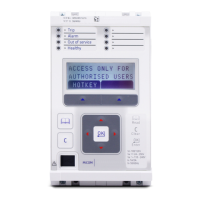
